Premium Only Content
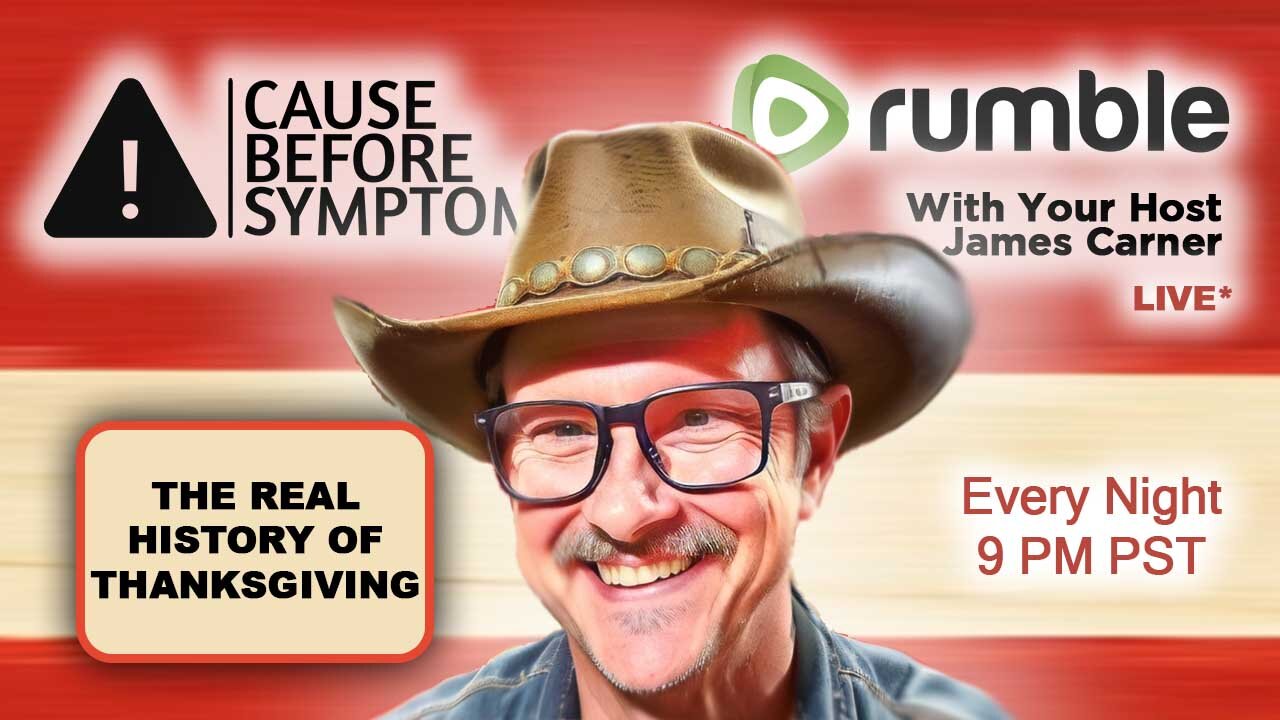
The Real History of Thanksgiving
Cause Before Symptom - With Your Host James Carner
The Real History of Thanksgiving
“Learning” about Thanksgiving in our school system for some of us may be the first time we are even told about indigenous nations and people, but it is a false history. Learning about the realities of genocide, invasions, slavery, and war, we come to understand that Thanksgiving is above all, a colonial holiday that literally celebrates military victories and outright slaughter of Native Americans; made into law and custom by the government. It is not the feel good celebration of settler and indigenous relations we are taught to believe.
During a time when Native warriors and their accomplices are risking their lives fighting on the front lines while poverty, mass incarceration, pollution, continued land theft, destructive resource extraction, and abysmal conditions are the norm in many Native communities, let us all remember and reaffirm our commitment to the struggle against colonialism and the settler-State. With this in mind, we are reprinting a list of ongoing sites of Native resistance to resource extraction and beyond.
In Thanksgiving pageants held at schools across the United States, children don headdresses colored with craft-store feathers and share tables with classmates wearing black construction paper hats. It’s a tradition that pulls on a history passed down through the generations of what happened in Plymouth: local Native Americans welcomed the courageous, pioneering pilgrims to a celebratory feast.
Most of us associate the holiday with happy Pilgrims and Indians sitting down to a big feast. And that did happen – once. The story began in 1614 when a band of English explorers sailed home to England with a ship full of Patuxet Indians bound for slavery. They left behind smallpox which virtually wiped out those who had escaped. By the time the Pilgrims arrived in Massachusetts Bay they found only one living Patuxet Indian, a man named Squanto who had survived slavery in England and knew their language. He taught them to grow corn and to fish, and negotiated a peace treaty between the Pilgrims and the waam · puh · know · aag (Wampanoag) Nation. At the end of their first year, the Pilgrims held a great feast honoring Squanto and the Wampanoags.
But as word spread in England about the paradise to be found in the new world, religious zealots called Puritans began arriving by the boat load. Finding no fences around the land, they considered it to be in the public domain. Joined by other British settlers, they seized land, capturing strong young Natives for slaves and killing the rest. But the Pequot Nation had not agreed to the peace treaty Squanto had negotiated and they fought back. The Pequot War was one of the bloodiest Indian wars ever fought.
In 1637 near present day Groton, Connecticut, over 700 men, women and children of the Pequot Tribe had gathered for their annual Green Corn Festival which is our Thanksgiving celebration. In the predawn hours the sleeping Indians were surrounded by English and Dutch mercenaries who ordered them to come outside. Those who came out were shot or clubbed to death while the terrified women and children who huddled inside the longhouse were burned alive. The next day the governor of the Massachusetts Bay Colony declared “A Day Of Thanksgiving” because 700 unarmed men, women and children had been murdered.
Cheered by their “victory”, the brave colonists and their Indian allies attacked village after village. Women and children over 14 were sold into slavery while the rest were murdered. Boats loaded with a many as 500 slaves regularly left the ports of New England. Bounties were paid for Indian scalps to encourage as many deaths as possible.
Following an especially successful raid against the (pee - Kwaat) Pequot in what is now Stamford, Connecticut, the churches announced a second day of “thanksgiving” to celebrate victory over the heathen savages. During the feasting, the hacked off heads of Natives were kicked through the streets like soccer balls. Even the friendly Wampanoag did not escape the madness. Their chief was beheaded, and his head impaled on a pole in Plymouth, Massachusetts — where it remained on display for 24 years.
The killings became more and more frenzied, with days of thanksgiving feasts being held after each successful massacre. George Washington finally suggested that only one day of Thanksgiving per year be set aside instead of celebrating each and every massacre. Later Abraham Lincoln decreed Thanksgiving Day to be a legal national holiday during the Civil War — on the same day he ordered troops to march against the starving Sioux in Minnesota.
This story doesn’t have quite the same fuzzy feelings associated with it as the one where the Indians and Pilgrims are all sitting down together at the big feast. But we need to learn our true history so it won’t ever be repeated. Next Thanksgiving, when you gather with your loved ones to Thank God for all your blessings, think about those people who only wanted to live their lives and raise their families. They, also took time out to say “thank you” to Creator for all their blessings.
In truth, massacres, disease and American Indian tribal politics are what shaped the Pilgrim-Indian alliance at the root of the holiday.
But, as David Silverman writes in his book This Land Is Their Land: The Wampanoag Indians, Plymouth Colony, and the Troubled History of Thanksgiving, much of that story is a myth riddled with historical inaccuracies. Beyond that, Silverman argues that the telling and retelling of these falsehoods is deeply harmful to the Wampanoag Indians whose lives and society were forever damaged after the English arrived in Plymouth. Silverman’s book focuses on the (waam ·puh · know · aags) Wampanoags. When the pilgrims landed at Plymouth in 1620, the Say - Chem sachem (chief) Osama-Quinn (Ousamequin) offered the new arrivals an On - Taunt entente, primarily as a way to protect the Wampanoags against their rivals, the Nerra-gan-sets Narragansetts. For 50 years, the alliance was tested by colonial land expansion, the spread of disease, and the exploitation of resources on Wampanoag land. Then, tensions ignited into war. Known as King Philip’s War (or the Great Narragansett War), the conflict devastated the Wampanoags and forever shifted the balance of power in favor of European arrivals. Wampanoags today remember the Pilgrims’ entry to their homeland as a day of deep mourning, rather than a moment of giving thanks.
The myth is that friendly Indians, unidentified by tribe, welcome the Pilgrims to America, teach them how to live in this new place, sit down to dinner with them and then disappear. They hand off America to white people so they can create a great nation dedicated to liberty, opportunity and Christianity for the rest of the world to profit. That’s the story—it’s about Native people conceding to colonialism. It’s bloodless and in many ways an extension of the ideology of Manifest Destiny.
One is that history doesn’t begin for Native people until Europeans arrive. People had been in the Americas for least 12,000 years and according to some Native traditions, since the beginning of time. And having history start with the English is a way of dismissing all that. The second is that the arrival of the Mayflower is some kind of first-contact episode. It’s not. Wampanoags had a century of contact with Europeans–it was bloody and it involved slave raiding by Europeans. At least two and maybe more Wampanoags, when the Pilgrims arrived, spoke English, had already been to Europe and back and knew the very organizers of the Pilgrims’ venture. Most poignantly, using a shared dinner as a symbol for colonialism really has it backward. No question about it, Wampanoag leader Ousamequin reached out to the English at Plymouth and wanted an alliance with them. But it’s not because he was innately friendly. It’s because his people have been decimated by an epidemic disease, and Ousamequin sees the English as an opportunity to fend off his tribal rebels. That’s not the stuff of Thanksgiving pageants. The Thanksgiving myth doesn’t address the deterioration of this relationship culminating in one of the most horrific colonial Indian wars on record, King Philip’s War, and also doesn’t address Wampanoag survival and adaptation over the centuries, which is why they’re still here, despite the odds.
For quite a long time, English people had been celebrating Thanksgivings that didn’t involve feasting—they involved fasting and prayer and supplication to God. In 1769, a group of pilgrim descendants who lived in Plymouth felt like their cultural authority was slipping away as New England became less relevant within the colonies and the early republic, and wanted to boost tourism. So, they started to plant the seeds of this idea that the pilgrims were the fathers of America. What really made it the story is that a publication mentioning that dinner published by the Rev. Alexander Young included a footnote that said, “This was the first Thanksgiving, the great festival of New England.” People picked up on this footnote. The idea became pretty widely accepted, and Abraham Lincoln declared it a holiday during the Civil War to foster unity. It gained purchase in the late 19th century, when there was an enormous amount of anxiety and agitation over immigration. The white Protestant stock of the United States was widely unhappy about the influx of European Catholics and Jews, and wanted to assert its cultural authority over these newcomers. How better to do that than to create this national founding myth around the Pilgrims and the Indians inviting them to take over the land? This mythmaking was also impacted by the racial politics of the late 19th century. The Indian Wars were coming to a close and that was an opportune time to have Indians included in a national founding myth. You couldn’t have done that when people were reading newspaper accounts on a regular basis of atrocious violence between white Americans and Native people in the West. What’s more, during Reconstruction, that Thanksgiving myth allowed New Englanders to create this idea that bloodless colonialism in their region was the origin of the country, having nothing to do with the Indian Wars and slavery. Americans could feel good about their colonial past without having to confront the really dark characteristics of it.
It's incorrect as is widely assumed that native people had no sense of property. They didn't have private property, but they had community property, and they certainly understood where their people's land started and where it ended. And so, when Europeans come to the Americas and they buy land from the Wampanoags, the Wampanoags initially assume the English are buying into Wampanoag country, not that they're buying Wampanoag country out from under their feet.
Imagine a flotilla of Wampanoag canoes crosses the Atlantic and goes to England, and then the Wampanoags buy land from the English there. Has that land now passed out of the jurisdiction of England and become the Wampanoags’? No, that's ridiculous. But that's precisely what the English were assuming on this side of the Atlantic. Part of what King Philip's War was about is Wampanoag people saying, ‘Enough, you're not going to turn us into a landless, subjugated people.’
Did all Wampanoags want to enter into alliance with the English?
From the very beginning, a sizable number of Wampanoags disagreed with Ousamequin's decision to reach out to [the English] and tried to undermine the alliance. Ousamequin puts down multiple plots to wipe out the colony and unseat him. Some Wampanoags say, ‘Let's make an alliance with the Narragansetts and get rid of these English. They've been raiding our coast for decades, enslaving our people, carrying them off to unknown fates and they can't be trusted.’ Some Wampanoags believed they caused epidemics and there were prophecies that this would be the end of the People.
When the English arrived, they entered a multilateral Indian political world in which the internal politics of the Wampanoag tribe and the intertribal politics of the Wampanoag tribe were paramount. To the degree the Wampanoags dealt with the English, it was to adjust the power dynamics of Indian country.
The politics of Indian country are more important to native people than their differences with colonists. There were no ‘Indians’ when the English arrived. Native people didn't conceive of themselves as Indians—that's an identity that they have had to learn through their shared struggles with colleagues. And it takes a long time—they have been here for 12,000 plus years, and there are a lot of differences between them. Their focus is on their own people, not on the shared interests of Indians and very often, what's in the best interest of their own people is cutting deals with colonial powers with an eye towards combating their native rivals.
The main difference has to do with King Philip's War. The question is whether native people, led by Metacomet, or Philip as the English call him, were plotting a multi-tribal uprising against the English. I think they were. Some of my historian colleagues think it's a figment of paranoid English imagination. But I see a lot of warning signals building during the 1660s and 70s from Englishmen who lived cheek-by-jowl with Wampanoag people and were terrified of what they were seeing on the ground. I see a pattern of political meetings between native leaders who hated each other. And yet, they were getting together over and over and over again—it all adds up to me.
There's this tendency to see the English as the devils in all of this. I don't think there's any question they’re in the wrong, but it doesn't let them off the hook to say that native people wouldn't take it anymore. And regardless of that, I think the evidence shows that native people had reached their limit and recognize that if they didn't rise up immediately, they were going to become landless subordinates to English authority.
This is about as contrary to the Thanksgiving myth that one can get. That's the story we should be teaching our kids. They should be learning about why native people reached that point, rather than this nonsense that native people willingly handed off their country to the invaders. It does damage to how our native countrymen and women feel as part of this country, it makes white Americans a lot less reflective about where their privilege comes from, and it makes us a lot less critical as a country when it comes to interrogating the rationales that leaders will marshal to act aggressively against foreign others. If we're taught to cut through colonial rhetoric we'll be better positioned to cut through modern colonial and imperial rhetoric.
Silverman’s book examines the complex history of Wampanoag-English relations, challenging the traditional Thanksgiving narrative. It explores the impact of European colonization on Wampanoag society, including disease, warfare, and land dispossession, while also highlighting Wampanoag agency and resistance. The author analyzes historical sources, acknowledging their biases, and incorporates Wampanoag perspectives to offer a more nuanced understanding. The text argues for a more accurate and inclusive representation of this history, emphasizing the lasting impact of colonization on Wampanoag people. It also addresses the ongoing need to correct historical misrepresentations and promote a more complete understanding of Thanksgiving.
The Wampanoag Indians, Plymouth Colony, and the Troubled History of Thanksgiving by David J. Silverman (2019), supplemented with information from the index and endnotes.
Key Themes:
1. Wampanoag Life Before and After Contact: The document delves into the rich pre-colonial history of the Wampanoag, their creation myths, seasonal migration patterns, economic practices, and political structures. It highlights the transition from nomadic hunting and gathering to a more settled lifestyle based on horticulture, fishing, and the use of weirs. This shift led to increased territoriality and trade.
2. Impact of European Arrival and Colonial Expansion: The arrival of Europeans introduced new trade opportunities but also brought devastating epidemics, escalating violence, and ultimately dispossession of Wampanoag land. The document chronicles the growing tensions as colonial settlements expanded, encroaching on Wampanoag territory and resources, leading to land sales, jurisdictional disputes, and eventually war.
3. Wampanoag Resistance and Agency: Despite facing overwhelming challenges, the Wampanoag actively resisted colonial encroachment, strategically utilizing diplomacy, trade, alliances, and legal arguments to protect their land and autonomy. They adapted to changing circumstances, leveraging new technologies and knowledge systems, and maintaining a strong sense of identity and cultural resilience.
Important Ideas and Facts:
Pre-Colonial Life:
* Creation Stories: Wampanoag stories grounded their people in the landscape, explaining the natural features through the actions of giants like Moshup and the Thunderbird, illustrating a deep connection to their territory.
* Seasonal Round: Wampanoags followed a seasonal round, spending spring at riverside fish runs, summer along the shoreline, and fall and winter inland, demonstrating resourcefulness and environmental adaptation.
* Horticulture and Trade: The adoption of maize horticulture led to increased population density, more complex social structures, and a reliance on trade with neighboring communities for resources not readily available in their local ecology.
* Political Organization: Wampanoag sachems, who inherited their positions but could be removed for poor performance, managed inter-tribal relations, resolved disputes, and allotted land. Paramount sachems, like Ousamequin (Massasoit), held fragile authority over local sachems through alliances, kinship ties, and tribute payments.
European Arrival and Colonization:
* Early Encounters and Epidemics: Explorers like Bartholomew Gosnold and John Smith established initial trade relations but also engaged in violence and kidnapping, foreshadowing future conflicts. The devastating epidemic of 1616-1619, possibly a "plague," dramatically reduced the Wampanoag population, creating a "virgin soil" environment that made them vulnerable to future outbreaks.
* Plymouth Colony and Trade: The Pilgrims, initially reliant on Wampanoag assistance, established a fur trade, creating competition with the Dutch and other European traders. This led to the introduction of wampum as a valuable trade item and currency, further altering Wampanoag economic and political dynamics.
* Land Sales and Displacement: Colonists' demand for land increased pressure on Wampanoag territory. Sachems, seeking to maintain peaceful relations and secure English support, began selling land, sometimes without the full consent of the people who held “planting rights.” This displacement fueled resentment and contributed to conflict.
Wampanoag Resistance and Agency:
* Diplomacy and Alliances: Ousamequin skillfully navigated colonial politics, forming alliances with Plymouth to counter threats from rival tribes like the Narragansetts, while simultaneously using the English as a buffer against Dutch expansion.
* Warfare and King Philip’s War: Facing increasing pressure on their land and autonomy, Wampanoag sachems like Wamsutta and Pumetacom (Metacom, King Philip) pursued a strategy of resistance, forging alliances with other tribes and acquiring arms in preparation for war. The conflict, known as King Philip’s War (1675-1676), resulted in devastating losses for both sides, with many Wampanoag captured, killed, or sold into slavery.
* Cultural Resilience: Despite the devastating impact of war and colonization, Wampanoags continued to resist dispossession through legal arguments, emphasizing their prior ownership of the land and challenging the authority of colonial courts. They also maintained their cultural traditions and identity, adapting to changing circumstances while striving to preserve their way of life.
Notable Quotes:
* On Land Ownership: “The Aquinnahs’ position was that Joseph Mittark never had the authority to alienate their homes in the first place.” (p. 214)
* On Colonial Encroachment: “Truly we think it is this: We poor Indians soon shall not have any place to reside, together with our poor children, because these Englishmen trouble us very much in this place of ours.” (p. 233)
* On Indian Subordination: Wampanoags remained willing to participate in the English system as coequals with the power to govern their own people, but not as subordinates. (p. 225)
* On Self-Rule: “that all men were born free and equal; that as a tribe they were determined to rule themselves.” (p. 242)
Conclusion:
This document provides valuable insight into the complex history of Wampanoag-colonial relations, revealing a story of resilience, adaptation, and ultimately loss. It challenges the traditional Thanksgiving narrative, highlighting the devastating consequences of colonization while acknowledging the agency and resistance of the Wampanoag people. The excerpts and accompanying information offer a nuanced perspective on a pivotal period in American history and the enduring legacy of colonialism on indigenous communities.
The Puritans were not just simple religious conservatives persecuted by the King and the Church of England for their unorthodox beliefs. They were political revolutionaries who not only intended to overthrow the government of England, but who actually did so in 1649.
The Puritan “Pilgrims” who came to New England were not simply refugees who decided to “put their fate in God’s hands” in the “empty wilderness” of North America, as a generation of Hollywood movies taught us. In any culture at any time, settlers on a frontier are most often outcasts and fugitives who, in some way or other, do not fit into the mainstream of their society. This is not to imply that people who settle on frontiers have no redeeming qualities such as bravery, etc., but that the images of nobility that we associate with the Puritans are at least in part the good “P.R.” efforts of later writers who have romanticized them.
It is also very plausible that this unnaturally noble image of the Puritans is all wrapped up with the mythology of “Noble Civilization” vs. “Savagery.” At any rate, mainstream Englishmen considered the Pilgrims to be deliberate religious dropouts who intended to found a new nation completely independent from non-Puritan England. In 1643 the Puritan/Pilgrims declared themselves an independent confederacy, one hundred and forty-three years before the American Revolution. They believed in the imminent occurrence of Armegeddon in Europe and hoped to establish here in the new world the “Kingdom of God” foretold in the book of Revelation. They diverged from their Puritan brethren who remained in England only in that they held little real hope of ever being able to successfully overthrow the King and Parliament and, thereby, impose their “Rule of Saints” (strict Puritan orthodoxy) on the rest of the British people. So they came to America not just in one ship (the Mayflower) but in a hundred others as well, with every intention of taking the land away from its native people to build their prophesied “Holy Kingdom.”
The Pilgrims were not just innocent refugees from religious persecution. They were victims of bigotry in England, but some of them were themselves religious bigots by our modern standards. The Puritans and the Pilgrims saw themselves as the “Chosen Elect” mentioned in the book of Revelation. They strove to “purify” first themselves and then everyone else of everything they did not accept in their own interpretation of scripture. Later New England Puritans used any means, including deceptions, treachery, torture, war, and genocide to achieve that end. They saw themselves as fighting a holy war against Satan, and everyone who disagreed with them was the enemy. This rigid fundamentalism was transmitted to America by the Plymouth colonists, and it sheds a very different light on the “Pilgrim” image we have of them. This is best illustrated in the written text of the Thanksgiving sermon delivered at Plymouth in 1623 by “Mather the Elder.” In it, Mather the Elder gave special thanks to God for the devastating plague of smallpox which wiped out the majority of the Wampanoag Indians who had been their benefactors. He praised God for destroying “chiefly young men and children, the very seeds of increase, thus clearing the forests to make way for a better growth”, i.e., the Pilgrims. In as much as these Indians were the Pilgrim’s benefactors, and Squanto, in particular, was the instrument of their salvation that first year, how are we to interpret this apparent callousness towards their misfortune?
The Wampanoag Indians were not the “friendly savages” some of us were told about when we were in the primary grades. Nor were they invited out of the goodness of the Pilgrims’ hearts to share the fruits of the Pilgrims’ harvest in a demonstration of Christian charity and interracial brotherhood. The Wampanoag were members of a widespread confederacy of Algonkian-speaking peoples known as the League of the Delaware. For six hundred years they had been defending themselves from my other ancestors, the Iroquois, and for the last hundred years they had also had encounters with European fishermen and explorers but especially with European slavers, who had been raiding their coastal villages. They knew something of the power of the white people, and they did not fully trust them. But their religion taught that they were to give charity to the helpless and hospitality to anyone who came to them with empty hands. Also, Squanto, the Indian hero of the Thanksgiving story, had a very real love for a British explorer named John Weymouth, who had become a second father to him several years before the Pilgrims arrived at Plymouth. Clearly, Squanto saw these Pilgrims as Weymouth’s people. To the Pilgrims the Indians were heathens and, therefore, the natural instruments of the Devil. Squanto, as the only educated and baptized Christian among the Wampanoag, was seen as merely an instrument of God, set in the wilderness to provide for the survival of His chosen people, the Pilgrims.
The Indians were comparatively powerful and, therefore, dangerous; and they were to be courted until the next ships arrived with more Pilgrim colonists and the balance of power shifted. The Wampanoag were actually invited to that Thanksgiving feast for the purpose of negotiating a treaty that would secure the lands of the Plymouth Plantation for the Pilgrims. It should also be noted that the INDIANS, possibly out of a sense of charity toward their hosts, ended up bringing the majority of the food for the feast.
5. A generation later, after the balance of power had indeed shifted, the Indian and White children of that Thanksgiving were striving to kill each other in the genocidal conflict known as King Philip’s War. At the end of that conflict most of the New England Indians were either exterminated or refugees among the French in Canada, or they were sold into slavery in the Carolinas by the Puritans. So successful was this early trade in Indian slaves that several Puritan ship owners in Boston began the practice of raiding the Ivory Coast of Africa for black slaves to sell to the proprietary colonies of the South, thus founding the American-based slave trade.
Obviously there is a lot more to the story of Indian/Puritan relations in New England than in the thanksgiving stories we heard as children. Our contemporary mix of myth and history about the “First” Thanksgiving at Plymouth developed in the 1890s and early 1900s. Our country was desperately trying to pull together its many diverse peoples into a common national identity. To many writers and educators at the end of the last century and the beginning of this one, this also meant having a common national history. This was the era of the “melting pot” theory of social progress, and public education was a major tool for social unity. It was with this in mind that the federal government declared the last Thursday in November as the legal holiday of Thanksgiving in 1898.
source
https://www.smithsonianmag.com/history/thanksgiving-myth-and-what-we-should-be-teaching-kids-180973655/
https://itsgoingdown.org/real-story-thanksgiving/
This Land Is Their Land: The Wampanoag Indians, Plymouth Colony, and the Troubled History of Thanksgiving, By David J. Silverman.
-
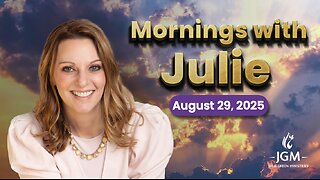 1:15:29
1:15:29
JULIE GREEN MINISTRIES
2 hours agoTHE GREAT WHITE WOLF NEXT TO YOUR PRESIDENT WILL SOON BE UNMASKED
59.4K128 -
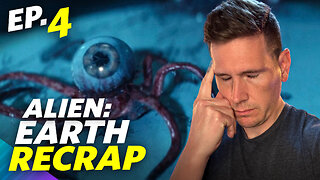 13:31
13:31
Adam Does Movies
19 hours ago $4.46 earnedAlien: Earth Episode 4 - Recrap
63.2K4 -
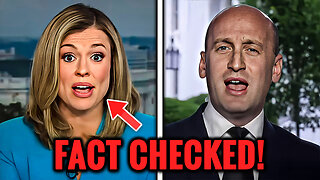 9:02
9:02
Millionaire Mentor
18 hours agoCNN Host Left SPEECHLESS After Stephen Miller SHREDS Her Narrative
20.8K17 -
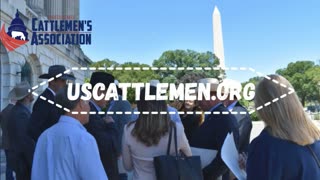 2:01:39
2:01:39
BEK TV
1 day agoTrent Loos in the Morning - 8/29/2025
25.9K -
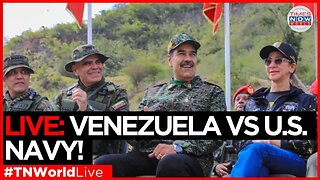 LIVE
LIVE
Times Now World
4 hours agoLIVE News | “Diplomacy of Cannons Is Over” – Maduro Challenges Washington | Times Now World
902 watching -
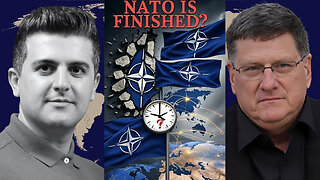 1:09:09
1:09:09
Dialogue works
1 day ago $0.76 earnedScott Ritter: NATO is FINISHED
14.8K6 -
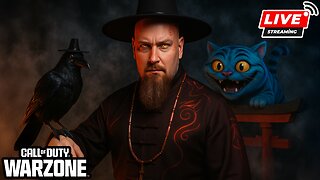 LIVE
LIVE
FyrBorne
13 hours ago🔴Warzone M&K Sniping: I Can Be Your Idol (For Sniping)
118 watching -
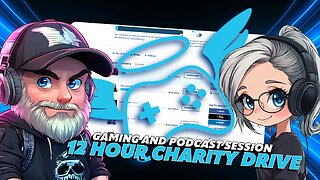 LIVE
LIVE
The Real Tombliboos - Live Streaming
6 hours ago $0.38 earned🔴CHARITY DRIVE🔴12 HOURS🔴Extra Life Charity🔴#ExtraLife #extralife4kids - Round 1
86 watching -
 17:54
17:54
Dr Disrespect
21 hours agoDR DISRESPECT vs VAN DAMME in Hitman 3
96.3K11 -
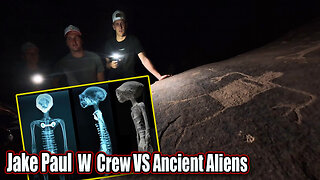 34:26
34:26
CarlCrusher
14 hours agoJake Paul's Crew vs Ancient Skinwalker Canyon
28.2K2